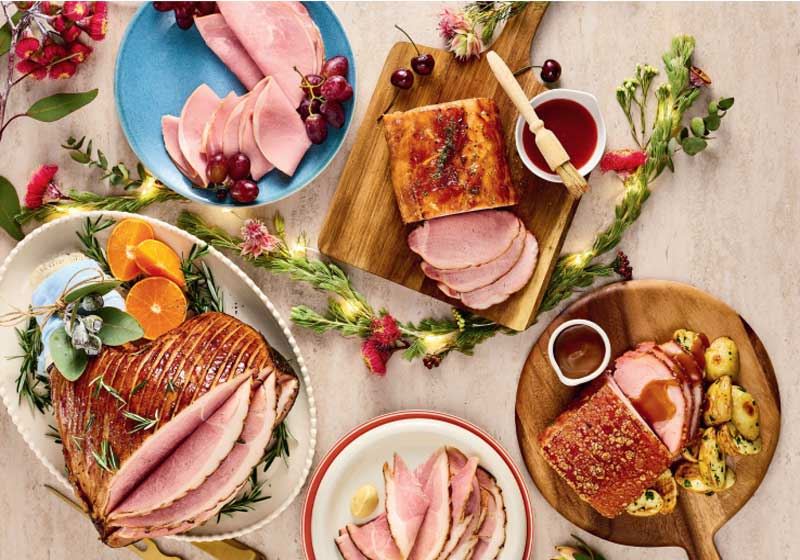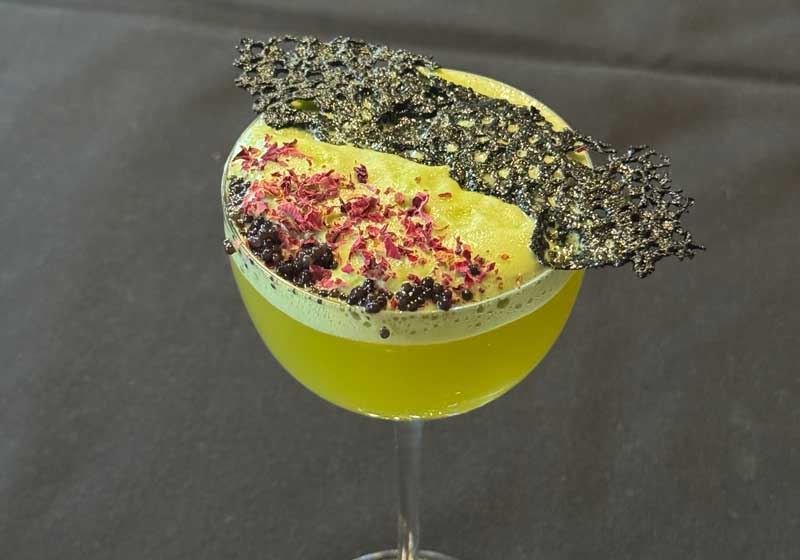By Marie-Antoinette Issa.
Baklava may steal the spotlight - all golden crunch, sugared nuts and syrupy shine. However, beyond those glossy filo sheets and fragrant drips of rosewater lies a world of Middle Eastern desserts that deserve to transition from supporting act to centre stage for their ability to capture minds (and mouths!) through their own uniquely sweet stories.
For example, while a group of Bearded Bakers may have put knafeh on the mainstream dessert map in Australia, for many Middle Easterners, this beloved breakfast-dessert hybrid made with shredded filo or semolina dough, layered with cheese or cream and soaked in syrup, has long held memories far older.

In countries such as Jordan and Lebanon, it is common to eat it stuffed in a sesame bun like a sandwich - a glorious, gooey, sweet-and-salty carb overload that hits differently at 9 am.
Similarly, having grown up in a traditional Lebanese household, I was also spoiled with a selection of sweets that extended beyond baklava. These were treats that presented a reason to linger a little longer - to banter, bicker and often argue about who made it better - rather than merely marking the end of a meal.
One of my first forays into the strength of sugar as a storyteller was through recollections of my mother (Oumi), who would stand over the stove, barefoot on cool tiles, stirring rosewater syrup with one hand and shooing away my diabetic-leaning father with the other.
Her unassuming dessert of choice was atayef - a kind of stuffed pancake usually filled with cream or nuts, pinched shut like dumplings and either fried or served fresh with sugary syrup.
While watching the batter bubble on the hotplate in our suburban Sydney kitchen may have seemed a world away from the mountainous village she had departed in her late teens, Mum’s expertise made it easy to imagine her ancestors hovering over open flames, indulging in the original versions of this decadence.
Alongside pancakes, another of my mother’s strengths was her power to showcase her skills by transforming pantry staples into something magical, like her signature halawet el jibn.
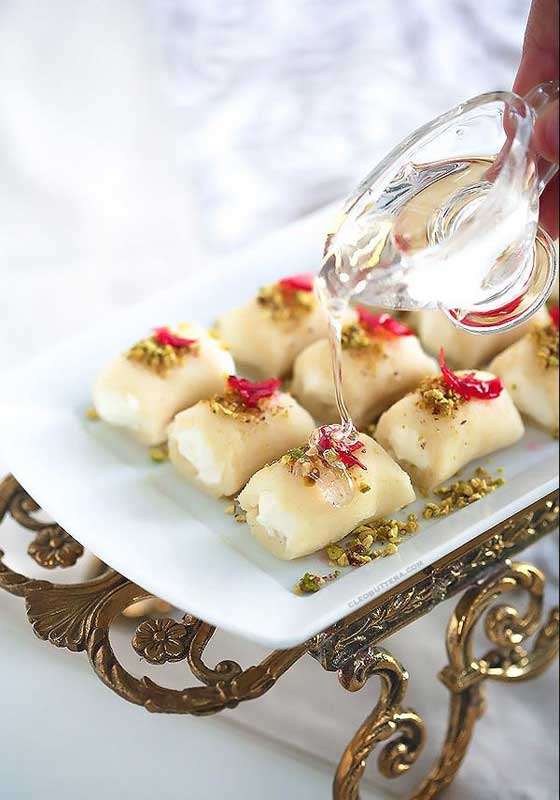
Photo credit: Cleobuttera.
Made from a base of semolina and cheese, this treat was commonly shredded, or (on a super special occasion) rolled into soft, chewy cylinders, filled with clotted cream and drizzled with syrup and crushed pistachios.
It was a similar case with barazek - crisp cookies coated with sesame seeds and pistachios that became a tea-time staple - and namoura - a sweet slice that spotlighted just four ingredients - semolina, milk, sugar and butter - which became Mum’s signature.
All simple, subtle ways to pay homage to the memories of a childhood where she had learnt to make do without.
Another under-the-radar indulgence that introduced me to the world of lesser-known Levantine sweets was my mother’s ma’amoul - delicate, shortbread-like domes filled with dried fruit or nuts.
In my family, these buttery little domes were handmade during the final days of Lent, in anticipation of Easter. Some were stuffed with dates and sealed shut with the prongs of a fork, while the almond-filled ones were shaped using a wooden mould my mother had picked up from the Lebanese grocer that served as a social meeting point for the women in our neighbourhood.
In an era that was yet to embrace creations that strayed too far from chocolate crackles, I found community among Lebanese-Australian Muslim friends, who celebrated their post-Ramadan Eids with comparable rituals.
Despite our different faiths, our culinary traditions had much in common - kitchens where every surface was covered in icing sugar, matching tea towels that had been purchased in bulk and aunties chiding helpers who had not properly shaped and sealed the pastry during the tactile, meditative process.
Much like the making of maa’amoul, it was - and continues to be - common for Middle Eastern families to combine the concepts of community and cooking by whipping up desserts for occasions they deemed worthy of celebration, such as the birth of a newborn.
So, when Mum made her pots of meghli - a cinnamon-spiced rice pudding topped with shredded coconut, almonds, pistachios and pine nuts - we knew a cousin had joined the clan and the kitchen would soon be filled with family, flavour and fuss to welcome the newest member of the fold.
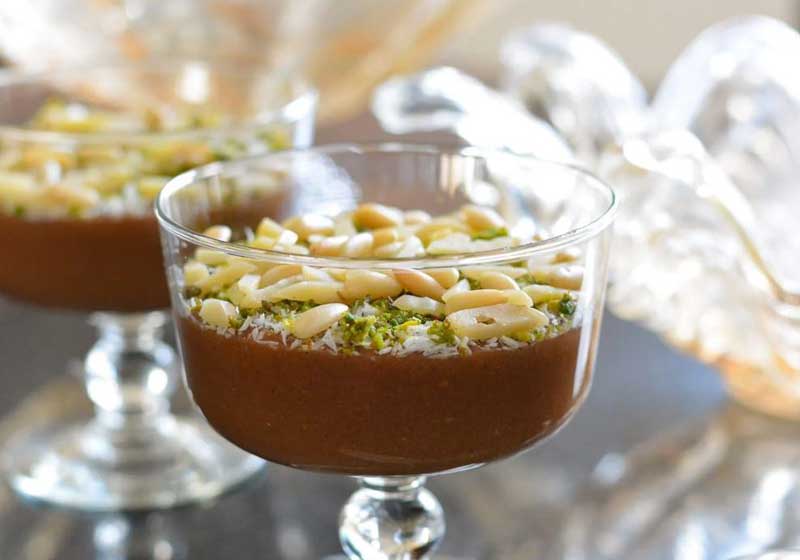
Birthday aside, official occasions were rarely the only excuse required for a gathering (or sugary treats). Just ask a foreign friend, who - on the receiving end of an invitation to an extended family lunch - once described Mum’s znoud el sit as ‘sweet spring rolls’.
He wasn’t completely wrong. These deep-fried dessert cylinders did indeed resemble their puffed Chinese counterparts, but the magic lay within - a dangerously indulgent filling, bursting with clotted cream (ashta) and soaked in orange blossom syrup. Served warm, these crunchy, creamy concoctions (which affectionately translate to ‘the upper arms of a lady’) were certainly not a treat for the calorie-conscious.
Ultimately, although my mother’s creations were conventional across the Levant (she’d often swap tips and recipes with her Syrian and Jordanian colleagues), the truth is Middle Eastern desserts are far more diverse than most people realise.
They stretch across countries and borders - from Egypt’s om ali (most comparable to a bread and butter pudding) to date-filled kleicha, often flavoured with cardamom and brushed with egg wash for a glossy finish in Iraq.
To Iran, where you’ll find delicate saffron and pistachio-laced treats like gaz, a chewy nougat from Isfahan and, in the Gulf, where luqaimat - golden fried dough balls drizzled with date syrup - are beloved.
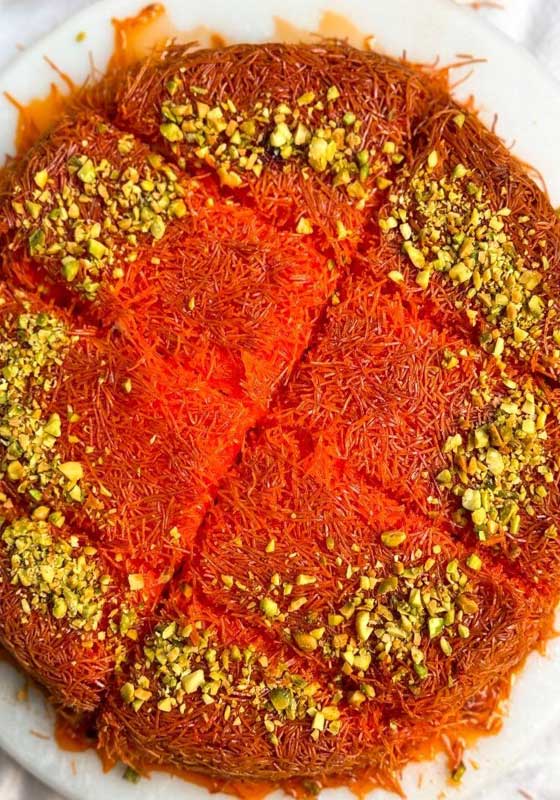
While in Yemen, the bint al-sahn, a flaky, honey-drizzled bread, is often served warm and shared among guests as a gesture of hospitality.
In any instance, the biggest lesson I learnt from the Lebanese bakery that was my mother’s kitchen was the importance of an open mind and palate.
So, my suggestion for those browsing a Middle Eastern grocer is to go beyond the baklava. Ask about the sweets with names you can’t pronounce. Taste the ones made with unusual ingredients like cheese - and, don’t knock rose petal-scented syrup till you’ve tried it.
Within every spoonful, or sticky-fingered bite of the desserts of the Middle East, is a story worth tasting.


